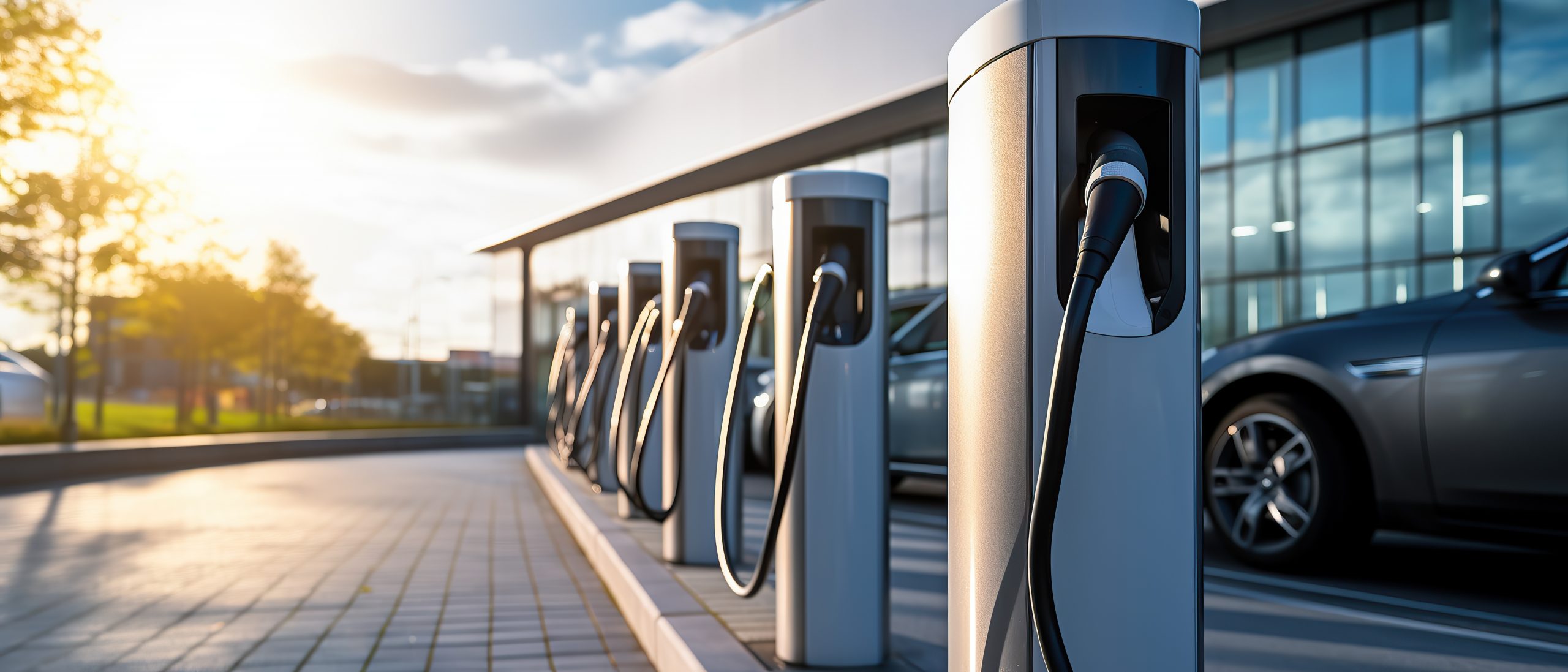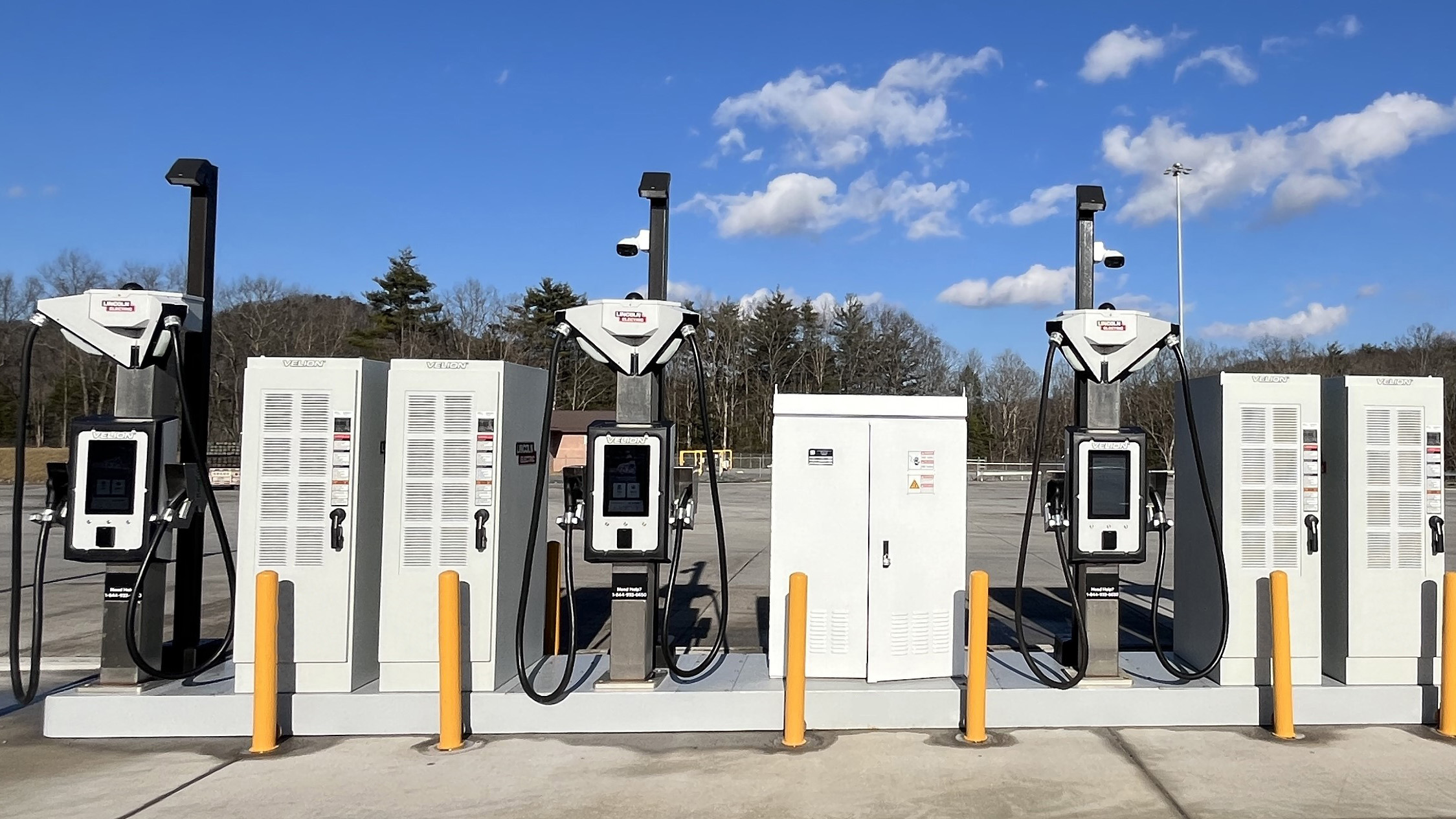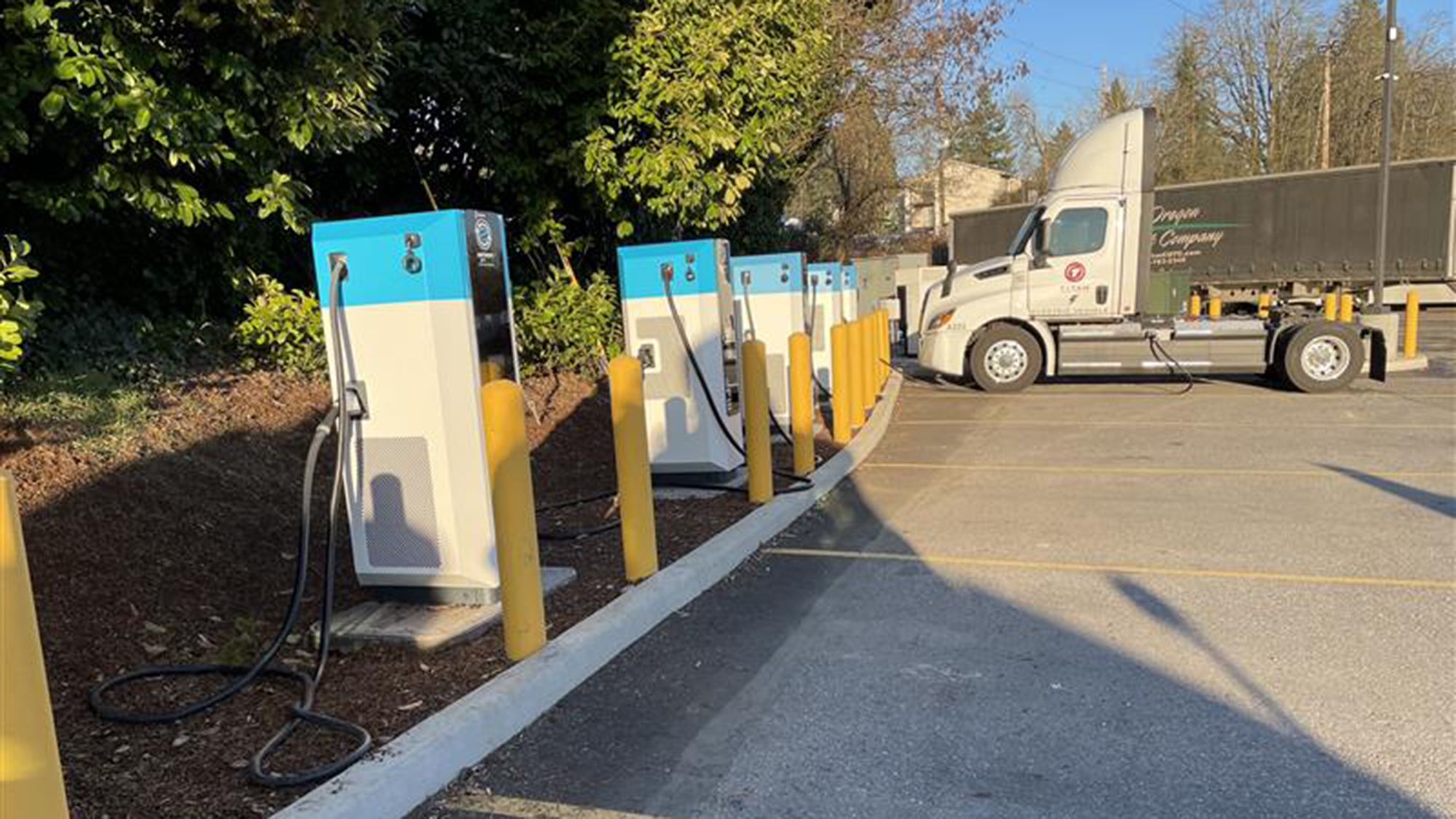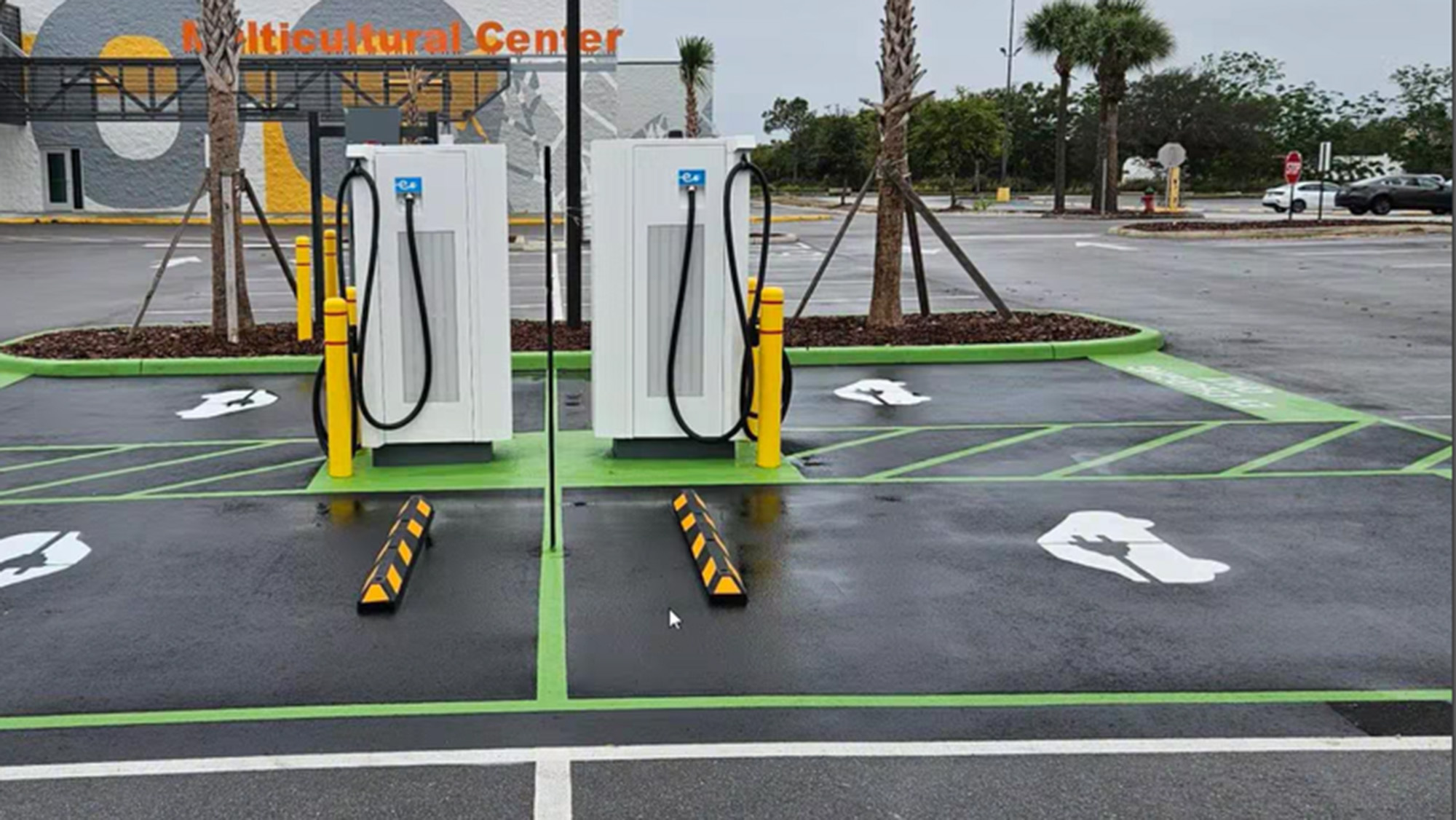June 28, 2024
Driving EV success: the Need for Scalable Solutions

There’s so much going on in the world of EV. The future offers all kinds of exciting prospects – yet there are numerous challenges and opportunities in the EV industry and built environment. While EV has been identified as a long-term solution for vehicle decarbonization, the U.S. adoption of these products has been slow. This has been driven by higher EV car prices and a lack of variety in the space, along with anxiety about the availability and location of public chargers. Here are some related trends and insights experts are watching carefully.
Think long-term vs. short-term
Traditionally, a large percentage of all EV charging installations in the U.S. have cast-in-place (poured concrete) as part of the solution. The industry’s default methodology for landing EV chargers is to dig a hole, pour some concrete in it, and attach the chargers and related equipment in the field with a set of bolts or other mounting apparatus. Cast-in-place is a tried-and-true method, but to meet the expansive decarbonization goals laid out by the federal government, deployments need to happen faster, safer, and more efficiently. This is why many engineering, procurement, and construction firms (EPCs), original equipment manufacturers (OEMs), and charge-point-operators (CPOs) are converting their installation practices to prefab and modular.
Until recently, the mindset in EV has been to build out the charging network as fast as possible – grab land, establish locations, and place chargers quickly with very little consideration for standardization or future-readiness. This rush has led to a great deal of unexpected issues around future-readiness, technology advancement, and the costs associated with owning and operating these sites. Now, we’re finding that we need to think about other issues such as the expense of installing infrastructure twice and then disposing of wasted materials as we dig up sites that have only been online for a handful of years.
These early learnings are fostering a mindset of deeper consideration for the long-term implications of upgrading sites with more powerful chargers and adding capacity, i.e. additional spaces for charging. The simplest solution is replacing the cast-in-place method with prefab or modular products that allow for upgrades as the industry evolves and public demand increases. Prefab technology offers a more sustainable solution that is scalable and eliminates the problems associated with concrete pouring as the manufacturing is done in a controlled, non-weather dependent factory environment and then delivered to the site.
Combatting range anxiety
A direct effect of the rapid roll-out is the hodge-podge of charging sites resulting in a lack of credibility of the EV charging network. We already know that a barrier for EV adoption is the public’s perceived lack of chargers, also known as “range anxiety.” Compounding issues include sites being offline, in disrepair, crowded or too slow. These issues are also present at traditional gas stations, but the public is assured there are options to fill up a tank every half mile in most places. Ultimately, the result should be increasing the performance of chargers when drivers get to a site, decreasing the time they spend at a charging site, and getting more sites online faster with an eye to the future.
The answer to minimizing range anxiety is multi-level and includes solutions that allow CPOs to scale up the deployment of chargers and increase their speed-to-market and reliability of sites. Modular, prefab solutions will improve the ease of installation and adaptability to upgrade sites to better equipment. For CPOs, it’s the chicken and egg scenario as they are not realizing the return on investment as quickly as they want because the public isn’t buying in as fast as they had hoped. Federal and state grant funding such as the National Electric Vehicle Infrastructure program (NEVI) does provide a jump start, making charger deployment more affordable for CPOs and reassuring the public that the distance gap is closing.
Fleets are leading the way
Commercial fleet operators may be the first group to help rebuild the public’s trust in a national EV charging network and further accelerate the adoption of EVs in the marketplace. The more buses, garbage trucks and Amazon delivery vehicles the average consumer sees on the road or pulling up to their home, the more they’ll believe in the space. EV fleets may also result in decreased operating costs for auto manufacturers, OEMs and CPOs, which would lead to more affordable pricing and would also enhance a brand’s eco-friendly reputation on the marketplace. Momentum for EV continues to build as businesses know that waiting too long to jump on the EV bandwagon could also cause compliance headaches and penalties down the road.
Innovative products create more opportunities
Effortlessly upgrading charger types and swiftly adding more units as demand grows are crucial to the expansion of EV charging infrastructure. For example, replacing a 50-kilowatt charger with a 150-kilowatt charger without any civil engineering work or ground excavation—where costs typically escalate—will improve efficiency and speed to market.
One innovative solution gaining traction is an adapter plate system which offers a universal mounting position and a very cost-effective installation. This adapter ensures that chargers can be upgraded quickly without replacing the infrastructure.
Another exciting development utilizes more sustainable materials and reduces weight with polymer concrete enclosures. Oldcastle Infrastructure’s innovation team is working on future-proof solutions including experimenting to optimize bend radius on large high voltage cables.
Induction charging is coming
Another innovation in this space is the development of induction pads, which enable on-the-go charging through coils embedded in the road. This system charges electric vehicles using an induction magnetic field converted into electricity, reducing the frequency of visits to charging stations.
However, questions remain about the reliability of induction charging and the system’s power delivery capacity. Concerns also arise regarding the duration of effective charging, the impact of weather conditions on the process, and strategies to minimize emissions and enhance performance. A conceivable approach could involve dedicated lanes like toll roads, first serving public transport and fleet vehicles, with charging facilitated through software or an app-based payment system. While numerous challenges remain, the potential of induction charging is undoubtedly promising.
Let customers drive the solutions
One thing we can count on in the EV industry is constant, and sometimes rapid change.
Building robust partnerships with customers and key stakeholders is crucial for addressing the evolving needs of the industry. Collecting customer feedback is essential for identifying the right solutions and continually enhancing them.
Solving the pain points of our customers is our focus at Oldcastle Infrastructure. As the world of EV continues to grow and change, the need for robust charging infrastructure has never been more apparent. That’s why we are working on customizable, scalable solutions that are both adaptable and future ready.
Explore our comprehensive range of EV charging solutions designed to power projects toward a sustainable, electric-powered future at https://oldcastleinfrastructure.com/ev-charging-infrastructure-solutions/



